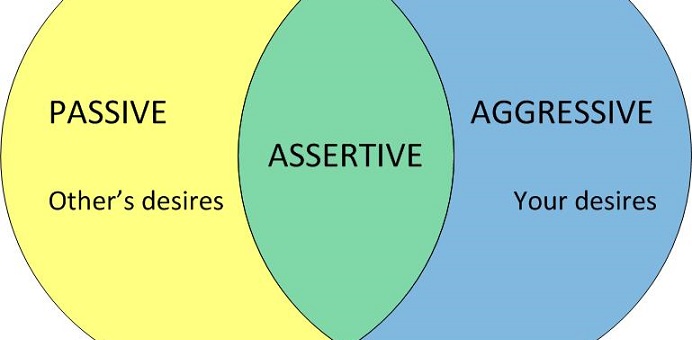SofemaOnline www.sofemaonline.com provides a training g program directly focused on the needs of the busy aviation professional. Here we are pleased to consider the role of assertive behaviour and how it can help you achieve positive outcomes.
What is the Difference between Assertive & Aggressive Behaviour
Aggressive behaviour is based on winning regardless. Simply you focus on your own best outcome and ignore the needs, rights or feelings of other people.
Assertive persons are self-assured, understand the balance needed for effective communication and they are able to get their point across firmly, fairly and with empathy.
More about Assertive Behaviour?
Essentially it is a means of communication which enables you to ask for what you want in the correct way – Diplomatic but Firm! by developing assertive behaviour you can become a strong motivated and confident communicator
Are you able to ask for what you want?
Are you able to achieve the positive outcome you desire?
Sometimes people resign themselves to a situation because a lack of confidence or belief that a different outcome can be achieved.
A benefit of adopting an assertive approach is a developing self-confidence which provides you with a better understanding of your own self-worth.
What Is Assertiveness?
Well to start with it has nothing to do with aggression in fact whilst there is a fine line between assertiveness and aggression we should understand that assertiveness is based on balance.
It is important to consider the rights of others whilst at the same time ensuring you are clear and unambiguous regarding your objectives wants and needs, while still
Assertive Behaviour Caution!
Assertive behaviour comes with a health warning …Why?
There can be cultural issues involved which can impact how we should modify assertive behaviour. In some national cultures and even within certain organizations there is an implicit expectation to behave in a more passive way.
In such situations assertive behaviour may be viewed as rude or even offensive.
Being assertive means finding the right balance between being passive and being aggressive. It also means standing up for yourself even in the most difficult situations.
However, we should avoid simply acting in our own interest without due consideration of the other person.
Positive Attributes of Assertive People
1/ Assertive people make great managers. by treating people with fairness and respect, such behaviour is typically reciprocated.
2/ Assertive people are less anxious and can recognize the merits of their opponent’s position and be able to establish common ground.
3/ Assertive people are more self-assured and do not feel threatened or victimized when faced with unexpected deviations.
4/ Assertive people feel empowered to do whatever it takes to achieve the best solutions to the problems which they encounter.
Meeting the challenge to becoming more assertive
a) See the value in yourself and pursue your rights. Believe in your inherent value not only to yourself but to your organization and team as well.
b) Ask for what you want with clarity and confidence, set yourself goals and objectives and strive to achieve them.
c) Find the middle ground where you are seen as solving rather than pushing!
d) Do not react to people who display negative emotion to you – step backwards
e) We all have the power to control ourselves practice staying calm
f) Always remain respectful to others and avoid wherever possible to violate another persons needs
g) Do not be afraid to stand up for yourself or to confront people who challenge you or your rights. Always control your emotions and stay respectful at all times.
Delivering Effective and Assertive Communications
Use the following steps to improve the communication flow when you are trying to use your assertive skills to achieve a positive outcome
a) Share with others exactly how you see the situation or problem.
b) Describe how you feel about the situation expressing your emotions clearly.
c) Identify clearly what you need from the other person not to leave them guessing
d) Share the positive impact that your request will have for the other person if your needs are met successfully
Assertive Behaviour Positive Attributes
a) Always be Open to Criticism and Compliments, accept positive and negative feedback positively.
b) Be able to say No!
c) Know your own limits, do not take on too much work, manage yourself with discipline
Using Assertive Communication Techniques
Use “I want”, “I need” or “I feel” to convey basic assertions and get your point across firmly. However try to use verbs like “will” instead of “could” or “should,” “want” instead of “need,” or “choose to” instead of “have to.”
Always consider how the other person views a situation and factor this into how you express what you need.
Be prepared to escalate if you are not moving in the best direction for you. Do this by becoming firmer though remaining polite and respectful.
Also be prepared to initiate formal meetings involving other people or departments if you do not achieve a satisfactory outcome, keep written communications to support the objective – remember you are trying to achieve the best possible win – win situation.
What is the Broken Record Technique
Keep restating your message using the same language, and don’t relent. Eventually the message will get through. Using this technique to protect yourself from exploitation is good However do not use to try to force someone to take action against their interests.
Sofema Aviation Service (SAS) www.sassofia.com and SofemaOnline (SOL) www.sofemaonline.com provide both classroom and online training providing Leadership in Aviation Best Practices Support and Guidance Vocational Training Course. For details please see the websites or email office@sassofia.com or online@sassofia.com




